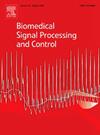A novel CNN-ViT-based deep learning model for early skin cancer diagnosis
IF 4.9
2区 医学
Q1 ENGINEERING, BIOMEDICAL
引用次数: 0
Abstract
Skin cancer is a serious global health issue where early detection is crucial for effective treatment and improved patient outcomes. However, accurate diagnosis is challenging due to the variety of subtypes and imaging complexities. This study introduces an innovative deep learning model based on the MetaFormer architecture, optimized specifically for skin cancer. The Proposed Model features a hybrid design that replaces traditional self-attention methods with novel focal self-attention mechanisms, enhancing its ability to identify critical regions, reduce noise, and extract features more effectively, ultimately boosting diagnostic accuracy. To evaluate the model’s generalization capabilities, it was tested on two benchmark datasets: ISIC 2019, which includes a diverse set of dermatological images across eight skin cancer classes, and HAM10000, widely used in dermatological research. The model achieved outstanding results, including an accuracy of 0.9254, precision of 0.9041, recall of 0.8768, and an F1-score of 0.8886 on ISIC 2019, and an accuracy of 0.9501, precision of 0.9470, recall of 0.9211, and an F1-score of 0.9334 on HAM10000. The Proposed Model surpasses existing methods in the field, outperforming ten advanced CNN models and twenty state-of-the-art ViT models under the same training and evaluation conditions. With a lightweight design of just 35.01 million parameters, it is optimized for real-time and mobile applications, making it highly practical for clinical use. Its reliable performance ensures accurate diagnoses, which are essential for early intervention and treatment, addressing a critical need in modern healthcare.
求助全文
约1分钟内获得全文
求助全文
来源期刊

Biomedical Signal Processing and Control
工程技术-工程:生物医学
CiteScore
9.80
自引率
13.70%
发文量
822
审稿时长
4 months
期刊介绍:
Biomedical Signal Processing and Control aims to provide a cross-disciplinary international forum for the interchange of information on research in the measurement and analysis of signals and images in clinical medicine and the biological sciences. Emphasis is placed on contributions dealing with the practical, applications-led research on the use of methods and devices in clinical diagnosis, patient monitoring and management.
Biomedical Signal Processing and Control reflects the main areas in which these methods are being used and developed at the interface of both engineering and clinical science. The scope of the journal is defined to include relevant review papers, technical notes, short communications and letters. Tutorial papers and special issues will also be published.
 求助内容:
求助内容: 应助结果提醒方式:
应助结果提醒方式:


